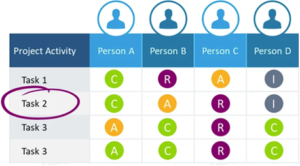Planning for Action
Taking action is a time-consuming and costly process that must be well prepared. As with any project involving risk, the case for action must be well managed.
Action calls for the involvement of lawyers, experts, other participants and stakeholders. It will also require tools to manage and control the process.
You can conduct a force-field analysis to identify the desired results, determine the best course of action, recognize potential allies, and detect the forces driving and opposing your cause. To determine the best strategy, you can conduct a SWOT analysis to map your strengths and weaknesses, opportunities, and threats.
Clear strategic planning will guide you throughout the entire project. A good strategic plan will provide all those who are involved with a clear understanding of the case, help to instill confidence in the undertaking, and encourage their support of and identification with the cause.
will provide all those who are involved with a clear understanding of the case, help to instill confidence in the undertaking, and encourage their support of and identification with the cause.
You can use a RACI matrix to assign responsibility and manage the process involving several participants in different roles and with responsibility. It is used to clarify and define roles and specific responsibilities in cross-functional projects and processes. JIRA is a free online tool for the management of project tasks.
The action you take will depend on the merit of each case, its jurisdiction, and the strengths and weaknesses of the respective parties. The jurisprudence from other environmental cases can help you to pre-assess the merit of your case.
The Climate Change Laws of the World and Climate Change Litigation of the World is a database recommended for climate laws, policies and litigation case from over 40 countries around the world. Other SEEDIS Action Resources will also help you with this.
Refer to your strategic plan for guidance on tactical interventions throughout the process. It should include all reasonable options as well as your communication strategy.
Initiating Legal Action
Once you have decided on the course of action and strategic approach, advice must be sought. It is suggested that you contact organizations and teams that have been involved in cases similar to yours to share their expertise and insights with you.
It is suggested other organizations that join your case must demonstrate their interest and advocacy for your cause. It must also be established and agreed who leads and makes the strategic decisions.
Advocacies that help organizations, communities and individuals in their fight to uphold human rights, protect the environment, and avert dangerous climate change should be contacted, such as that ClientEarth and Action4Justice. Also, the Urgenda Climate Litigation Network (CLN) and the Environmental Law Alliance Worldwide (ELAW) may give you legal and scientific support.
Co-claimants are also exposed to legal risks and liabilities. Terms and conditions must be drawn up to allocate the risks to the respective risk owner for their agreement, each having a distinct vested interest in a project and perception of its risks.
Anyone proceeding with a climate case should get legal counsel in their own jurisdiction for advice on the best approach and the associated risks. All such agreements should be reviewed by a competent lawyer.
World Lawyers' Pledge on Climate Action is a comprehensive resource of climate-related materials, legal initiatives, organizations, research, policy, and lawyers across the world who, as concerned members of the legal community, are committed to providing assistance and taking action against climate change.
If the case goes to litigation, you will need funding for the lawyers, experts and others who join you in fighting a potentially extended legal battle. CrowdJustice is an online platform for raising funds for initial advice or legal assistance. Climate Justice Fund is a funding facility that you might interest in contributing financially.
Mobilizing Support
The success of environmental action depends on the effective mobilization of the public. Making your cause public and getting broad-based support can help in getting courts to take on your case and motivate people into action.
Announcing your case can create public pressure and encourage the adverse party to move towards complying with your public demands. However, you should not prematurely alert your opponents to the action threatened against them.
 It is suggested that you keep the legal substance of your intended legal action as confidential as possible. You should not make your case public until you have secured the engagement of interested lawyers and your allies and the funding to take the case forward.
It is suggested that you keep the legal substance of your intended legal action as confidential as possible. You should not make your case public until you have secured the engagement of interested lawyers and your allies and the funding to take the case forward.
All stakeholders, including the lawyers, experts, allies and co-claimants, should formally agree to treat all nonpublic information provided by the participants confidentially. A standard mutual non-disclosure agreement can be used to ensure the protection of the information as well as the parties to the agreement.
Caution: All relevant documents should be kept in a safe place and shared with your lawyers or external experts only through a secure channel. It is also recommended that all mobile devices are kept out of all meetings.
Use your communication strategy to create a community of motivated people that you can call upon to take action when needed. Empower your allies by showing them what they can do to help.
Invest in a good communication strategy to inform the public, energize your community, and organize public support for your cause. A good communications strategy wins people over and keeps the public interested during the potentially long legal process.
Announce your case through social media. Invest in providing a larger audience with more in-depth insights into the substance of your cause through events, forums, and lectures. Stage a press conference and invite all media to attend.
